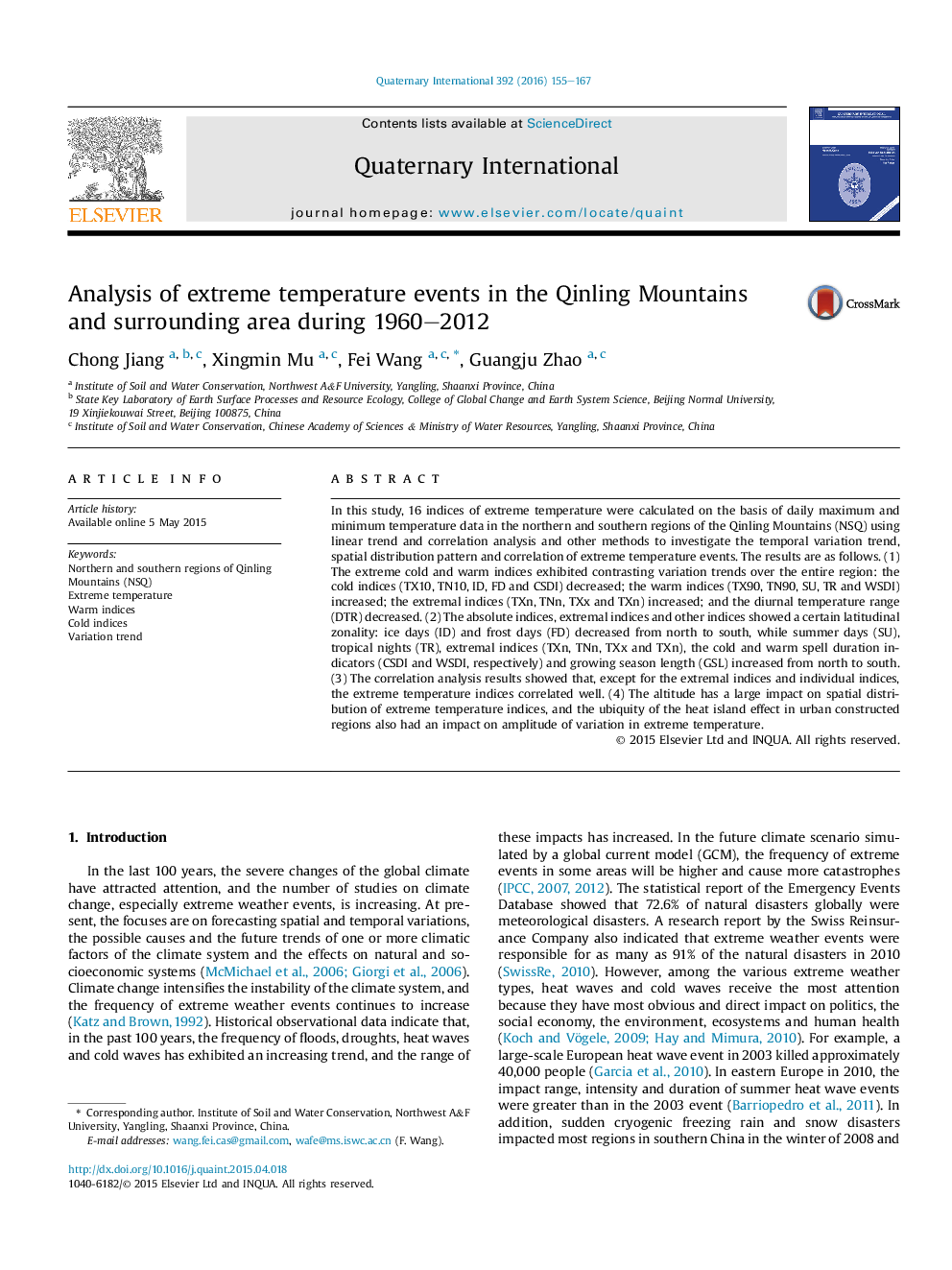| Article ID | Journal | Published Year | Pages | File Type |
|---|---|---|---|---|
| 1040393 | Quaternary International | 2016 | 13 Pages |
In this study, 16 indices of extreme temperature were calculated on the basis of daily maximum and minimum temperature data in the northern and southern regions of the Qinling Mountains (NSQ) using linear trend and correlation analysis and other methods to investigate the temporal variation trend, spatial distribution pattern and correlation of extreme temperature events. The results are as follows. (1) The extreme cold and warm indices exhibited contrasting variation trends over the entire region: the cold indices (TX10, TN10, ID, FD and CSDI) decreased; the warm indices (TX90, TN90, SU, TR and WSDI) increased; the extremal indices (TXn, TNn, TXx and TXn) increased; and the diurnal temperature range (DTR) decreased. (2) The absolute indices, extremal indices and other indices showed a certain latitudinal zonality: ice days (ID) and frost days (FD) decreased from north to south, while summer days (SU), tropical nights (TR), extremal indices (TXn, TNn, TXx and TXn), the cold and warm spell duration indicators (CSDI and WSDI, respectively) and growing season length (GSL) increased from north to south. (3) The correlation analysis results showed that, except for the extremal indices and individual indices, the extreme temperature indices correlated well. (4) The altitude has a large impact on spatial distribution of extreme temperature indices, and the ubiquity of the heat island effect in urban constructed regions also had an impact on amplitude of variation in extreme temperature.
